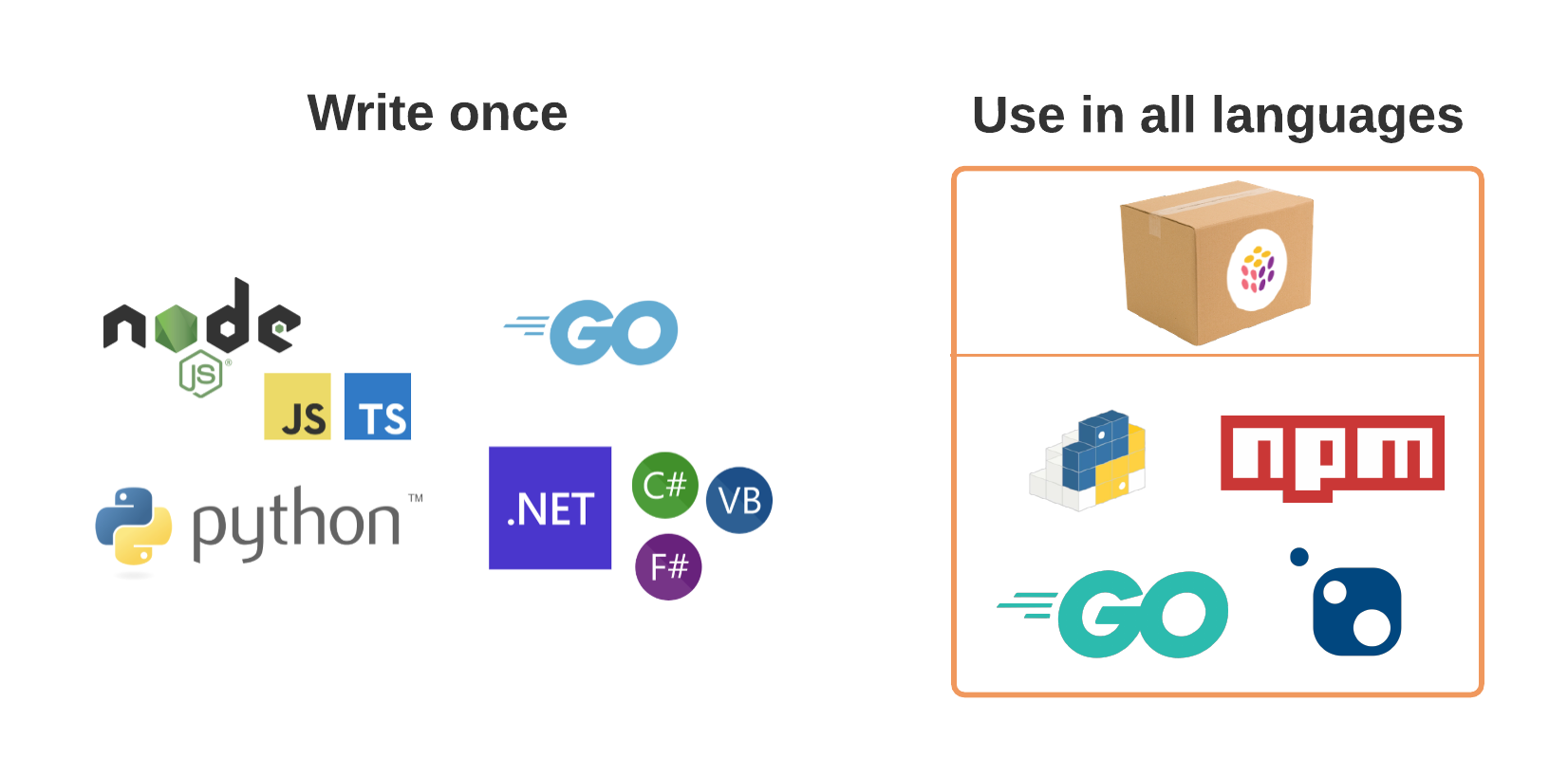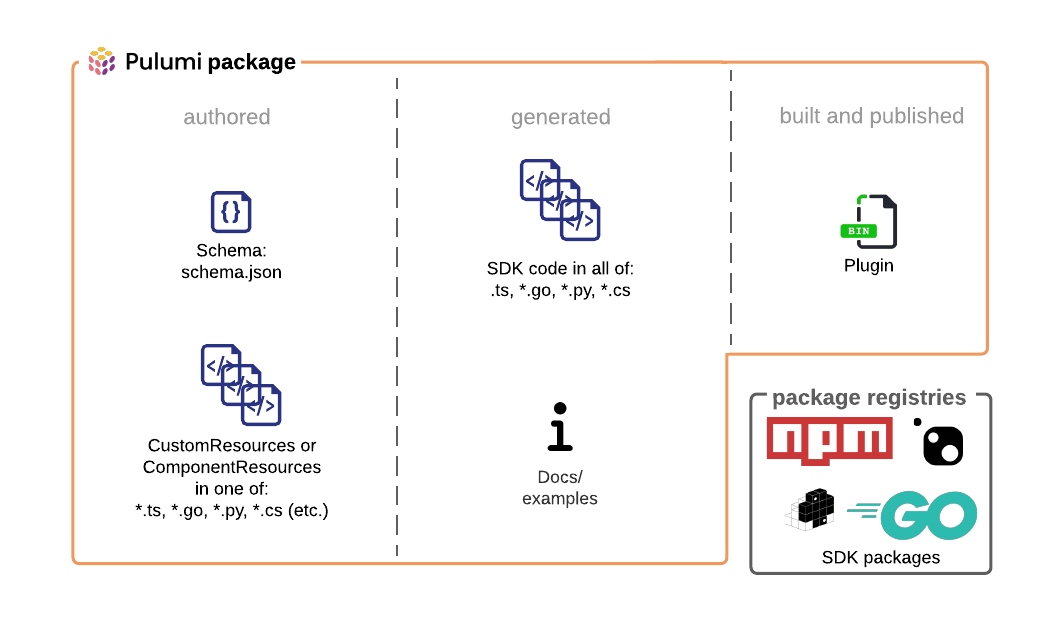Pulumi packages
Pulumi Packages are the core technology that enables cloud infrastructure resource provisioning to be defined once, and made available to users in all Pulumi languages. With Pulumi Packages, Resources and Components can be written once, in your preferred language, and made available in all the other languages supported by Pulumi.

Find Pulumi Packages on Pulumi Registry
Pulumi Registry is the central location where you can find all of the Pulumi Packages you can use. Visit Pulumi Registry to get started!
Author a Pulumi Package
To create your own Pulumi Package, use the guide.
Overview of authoring a package
Regardless of the type of Pulumi Package you want to author, there are a few key steps in the process of authoring a Pulumi package.
- Decide the type of package you want to create and create a repository for it using one of the template repos provided by Pulumi
- Create the Resources or Components you want to include in the package, either by authoring them manually (in the case of a Component Package) or generating them from a cloud provider’s API or via a provider bridge
- Build the resource provider plugin: the binary file that contains all of the components or resources you defined in your source code
- Generate the SDK code for all languages supported by Pulumi and packs the SDK packages–the npm, NuGet, and Python packages–that the Pulumi Package’s users will reference in their own programs
- Publish the SDK packages and the resource provider plugin

All Pulumi Packages must include a schema, which defines the resources and functions exposed by the package, and is used to drive the generation of language-specific SDKs and documentation.
Types of Pulumi Packages
There are currently 3 different types of Pulumi Packages:
- Native Pulumi Provider Package: Use the full features of the Pulumi resource model to create a provider for a new cloud platform. Examples: the
kubernetes,azure-native, andgoogle-nativepackages. - Bridged Provider Package: Take an existing resource provider from another supported ecosystem (like a Terraform provider), and bridge it to be exposed as a Pulumi Package. Examples: the
aws,tls, andcloudflarepackages. - Component Package: Write a Pulumi Component in your language of choice and expose it to users in all Pulumi languages. Example: the
ekspackage.
Thank you for your feedback!
If you have a question about how to use Pulumi, reach out in Community Slack.
Open an issue on GitHub to report a problem or suggest an improvement.
